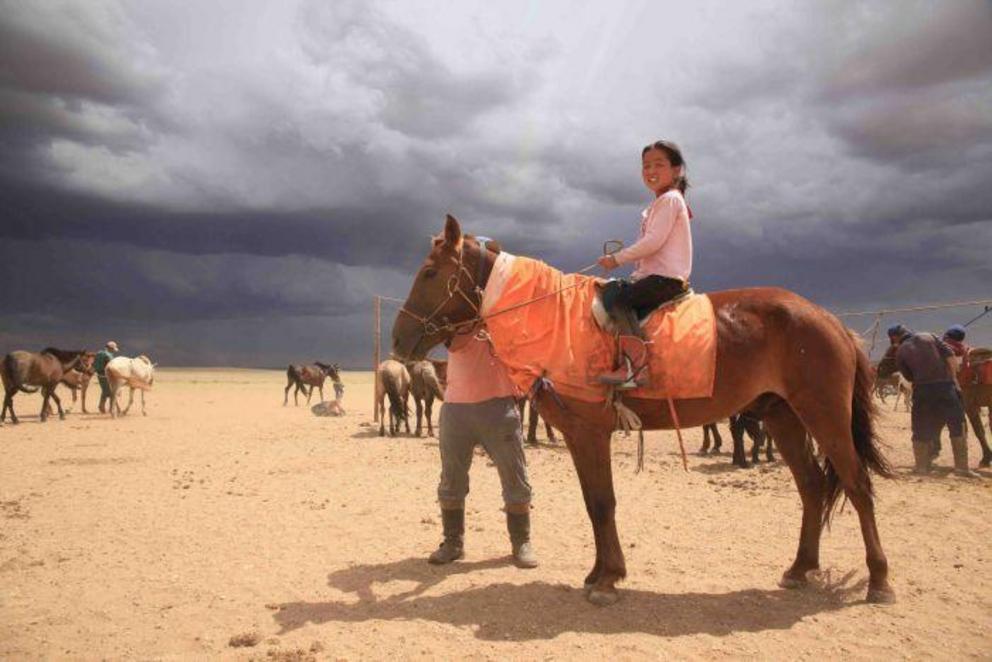Mongolia's child jockeys risk injury and death to race but is it tradition or just child labour?
Namuun has been racing horses since she was five-years-old.
The smell of wool grease and smouldering logs hangs in the air as seven-year-old Namuun carries a saddle — weighing as much as she does — to a line of horses tied to a post.
On the edge of the Gobi desert, traditional Mongolian tents, known as "ger", mark the silent landscape. They provide shelter for entire families who eat, sleep and live in one small space together.
But you're unlikely to find Namuun there — she prefers to spend her time on horseback.
She is proud to be one of the only female child jockeys in Mongolia.
With the help of her father, she is swung up onto the saddle and slips her pink cowgirl boots into the stirrups.

Namuun's saddle weighs as much as she does.
She begins to circle the campsite and as the wind whips up sand from the nearby dunes. Namuun squints her eyes and breaks into song — a "gingoo" tune that she says is a tribute to their horses to make them feel calm.
She gathers the reins in close to the saddle and leans forward. With just one kick, her horse launches forward, rocketing into the distance behind a motorbike.
They break into a gallop and race 25 kilometres across the desert back home.
This is Namuun's daily training for the Naadam festival — Mongolia's most famous nomad-style games, where competitors try their hand at horse racing, wrestling and archery.
The festival has been around in some form since the Genghis Khan era and continues to be treasured by nomadic families like Namuun's.
Retired horse trainer Tsegmid Sainbayar explains that parents have thrown their children into the saddle for races since Naadam's beginnings, because "children are the lightest, not as heavy for the horses".

Namuun's family is heavily involved in racing — her father and uncles are all horse breeders.
When asked what she thinks of the sport, Namuun smiles and says she loves horses.
"My father trains the horses and I am the jockey to race them," Namuun says as she points to her blue ribbons tied to the inside of the ger.
"I feel so good when I am on the horse's back, my family are so glad when I race, when I become a winner my brother is so proud of me."
But other young jockeys don't feel the same way. They see it as a job that they must do.
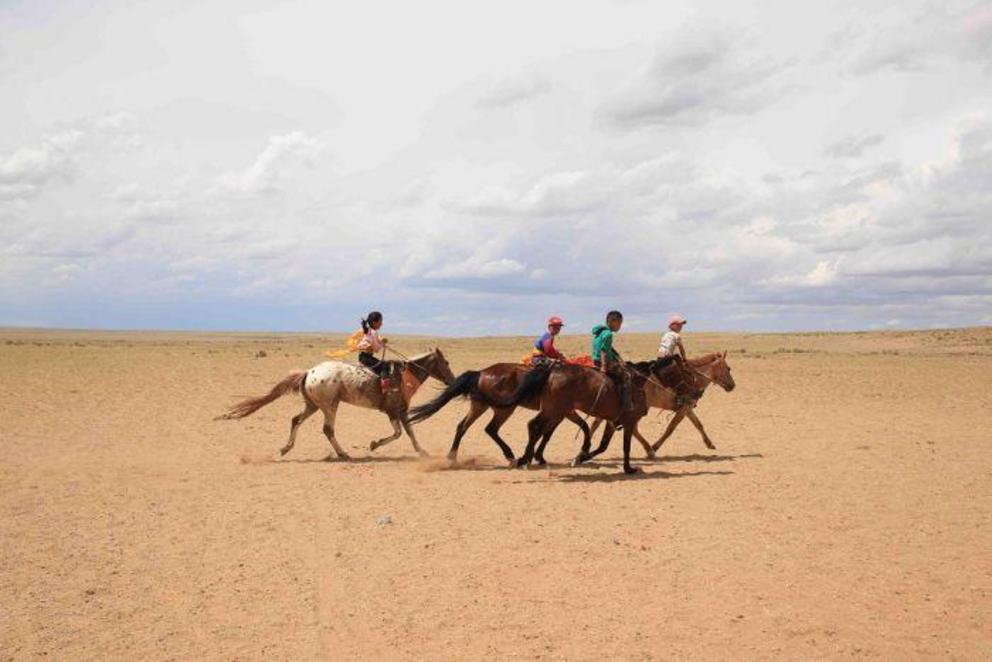
Children are thrown into the saddle for races because they are not as heavy as adults.
Casualties won't change tradition
More than 10,000 children participate in 395 horses races across the country.
Many parents rent out their kids to ride as jockeys over the summer so they can earn a wage to send home to their families.

Last year, about 600 child jockeys were thrown from their horses.
On race day, some can compete in up to eight races a day, starting at 9am and finishing at 9pm.
But the sport is inherently dangerous.
Last year, about 600 child jockeys were thrown from their horses and 169 were killed, according to Mongolia's National Traumatology and Orthopaedics Research Centre.
The number of casualties, however, isn't enough to cause widespread change in this Mongolian tradition.
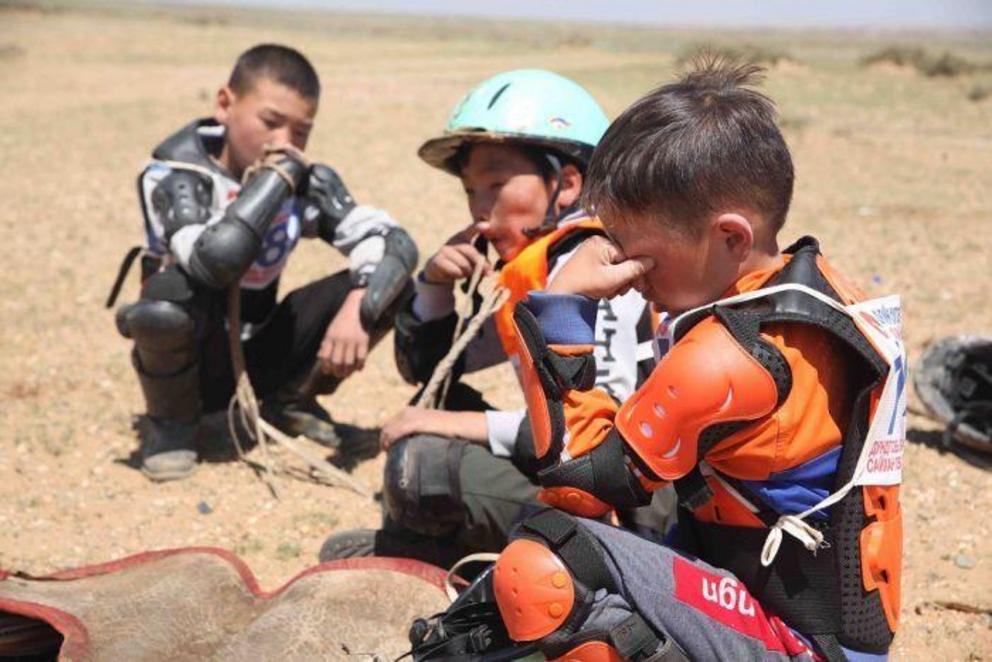
Many parents rent out their kids to ride as jockeys over the summer.
Despite rules mandating that children must wear a helmet in races, in rural Naadam festivals, many child jockeys go without, or only wear helmets on race day.
While Namuun's mother, Gaanchimeg, says the sport is "good for their health" and "a national tradition", she concedes she holds some concerns for her daughter.
"Namuun didn't have any accidents so far but when she races I always worry," she says.
Children as young as five entered into races
Child rights groups want better safety standards to be enforced and for the minimum age of jockeys to be raised to 18.
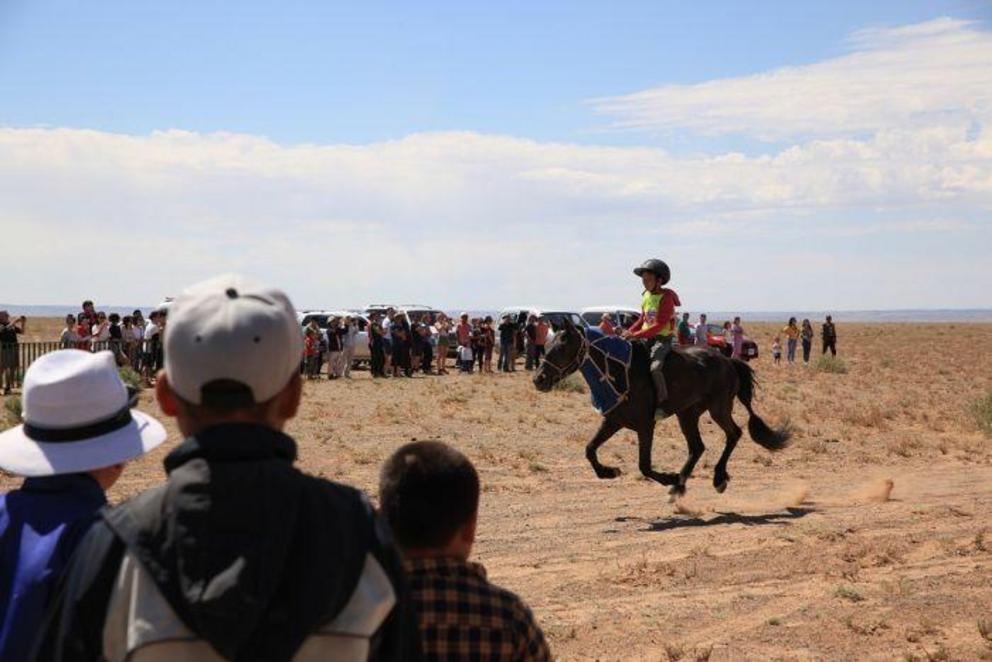
Children only need to be seven-years-old to compete as jockeys.
Currently, children only need to be aged seven to compete.
But some as young as five still are entered into races in rural areas.
UNICEF child protection specialist Amaraa Dorjsambuu does not believe tighter regulations alone are the solution.
Rather, she says there needs to be a change in mindset among parents to put a child's right to education ahead of making money as a jockey.
"At present, the national legal system on the protection of the rights of child jockeys is not fully developed," Ms Dorjsambuu says.

Some children as young as five are instructed to race.
"When child jockeys get injured, horse trainers and parents tend not to take it seriously and tend to only agree on medical costs, as there are no legal regulations to determine and punish perpetrators.
"One of the biggest concerns is the unofficial races — now ever more expanding — to hold horse races for private celebrations [that] happen without any supervision from the authorities and any injuries or violations to child rights can go unreported."
Traditional festival now 'just about the prize money'
As the festival slowly turns into a business, it is also facing more scrutiny.
Many fear Naadam is losing its spirit as a celebration of the Mongolian horse. The horse is one of the most treasured animals in Mongolia. Not only did they transport the travelling caravan of Genghis Khan's sprawling empire as they conquered new lands in the 13th century, but they also fed them.
But on two recent Naadam race days, horse trainers were seen openly giving their horses performance enhancing drugs.
Some trainers used doses of the diuretic furosemide, sodium bicarbonate to counteract lactic acid build-up or lactated ringers for hydration.
Others were seen heavily handling horses and driving nails into the bridles either side of the horse's bit.

Performance enhancing drugs are starting to be used by some horse trainers.
Former horse trainers, including Tsegmid Sainbayar, believe the traditional festival is being spoiled by corrupt practices.
"I've trained racing horses since 1970s. We used to start early with preparation and give them extra feed to make them strong," says Mr Sainbayar.
"Now the rules aren't strict and everything is becoming easier and just about the prize money."
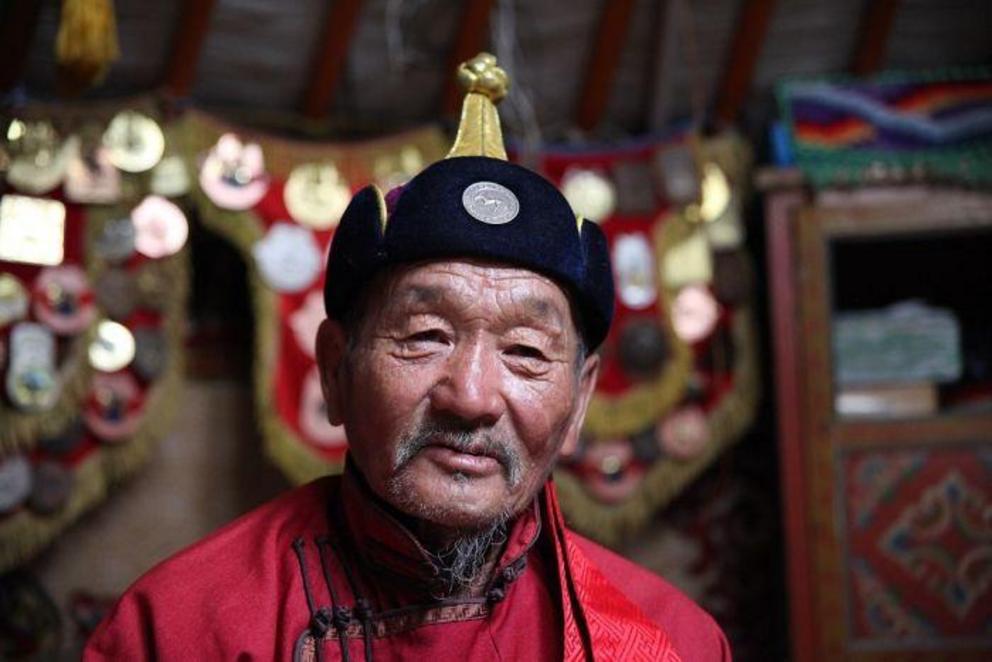
The future of Naadam
In the capital Ulaanbaatar, coffee shops are springing up on street corners.
Young Mongolian men stroll by not the traditional "del" Mongolian coat with the high collar, clinched waist and buttons to one side — but rather, jeans and a printed T-shirt.
With more young people moving to the city and leaving the nomadic lifestyle, many worry that Naadam won't exist in the future.

On Naadam festival day in Saikhan Ovoo village, the mood is hopeful.
But on Naadam festival day in Saikhan Ovoo village, the mood is hopeful.
Families unload their horse trucks around a Buddhist shrine and arch that marks the finish line for the horse races.
Wrestlers in red underwear and a loose blue jacket enter the arena with their hands in the air soaring like eagles.
Horse trainers sprinkle mare's milk on the horse's rump for good luck.
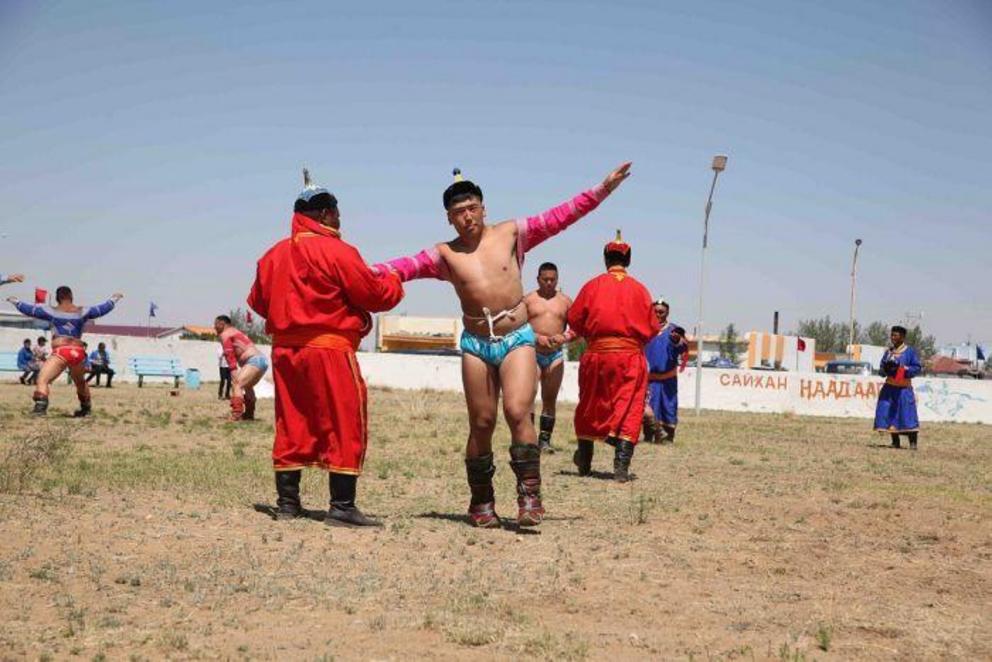
Wrestlers raise their arms in a ceremony dance before competing.
Sitting in the shadow of the horse truck, Namuun speaks matter-of-factly.
"I will probably only be racing until I am 12 or 13 then I will be out of the game," she says.
When asked what she wants to do she wants to do in the future, she replies with a big smile: "I want to finish secondary school and then I would love to be a singer".

